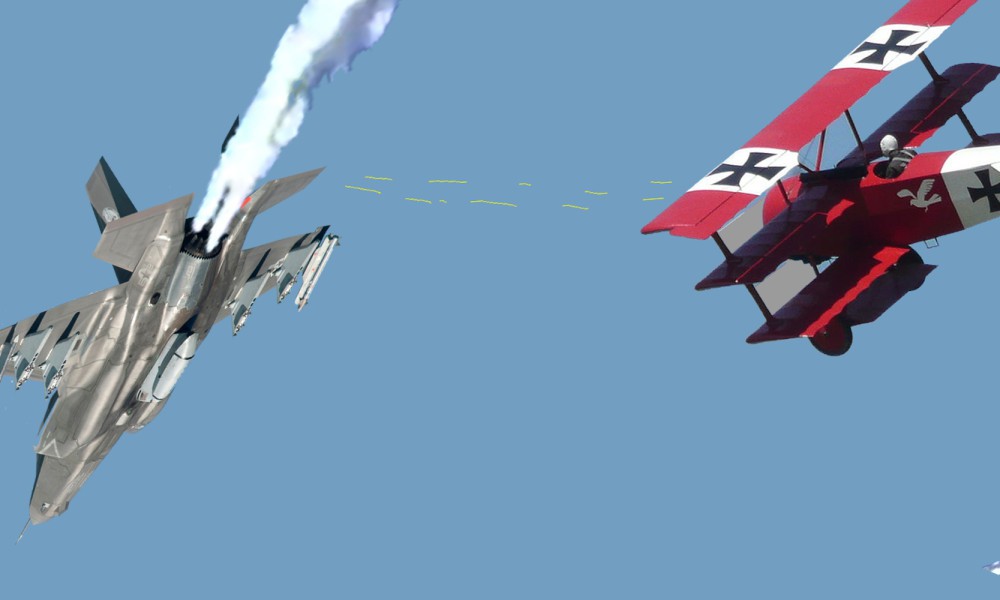
Dan Grazier and Mandy Smithberger provide a detailed run down of the current status of the F-35 Joint Strike Fighter (JSF) over at the Center for Defense Information at the Project On Government Oversight (POGO). The Air Force recently declared its version, the F-35A, combat ready, but Grazer and Smithberger make a detailed case that this pronouncement is “wildly premature.”
The Pentagon’s top testing office warns that the F-35 is in no way ready for combat since it is “not effective and not suitable across the required mission areas and against currently fielded threats.”
As it stands now, the F-35 would need to run away from combat and have other planes come to its rescue, since it “will need support to locate and avoid modern threats, acquire targets, and engage formations of enemy fighter aircraft due to outstanding performance deficiencies and limited weapons carriage available (i.e., two bombs and two air-to-air missiles).”
In several instances, the memo rated the F-35A less capable than the aircraft we already have.
The F-35’s prime contractor, Lockheed Martin, is delivering progressively upgraded versions of the aircraft in blocks, but the first fully-combat operational block will not be delivered until 2018. There are currently 175 operational F-35s with limited combat capability, with 80 more scheduled for delivery in 2017 and 100 in 2018. However, the Government Accountability Office estimates that it will cost $1.7 billion to retroactively upgrade these 335 initial F-35s to full combat ready status. Operational testing and evaluation of those rebuilt aircraft won’t be completed until 2021 and they will remain non-combat capable until 2023 at the earliest, which means that the original 355 F-35s won’t really be fully operational for at least seven more years, or 22 years after Lockheed was awarded the development and production contract in 2001. And this is only if the JSF Program and Lockheed manage to hit their current targets with a program—estimated at $1.5 trillion over its operational life, the most expensive weapon in U.S. history—characterized by delays and cost overruns.
With over $400 billion in sunk costs already, the F-35 program may have become “too big to fail,” with all the implications that phrase connotes. Countless electrons have been spun assessing and explaining this state of affairs. It is possible that the problems will be corrected and the F-35 will fulfill the promises made on its behalf. The Air Force continues to cast it as the centerpiece of its warfighting capability 20 years from now.
Moreover, the Department of Defense has doubled-down on the technology-driven Revolution in Military Affairs paradigm with its Third Offset Strategy, which is premised on the proposition that advanced weapons and capabilities will afford the U.S. continued military dominance into the 21st century. Time will tell if the long, painful saga of the F-35 will be a cautionary tale or a bellwether.
